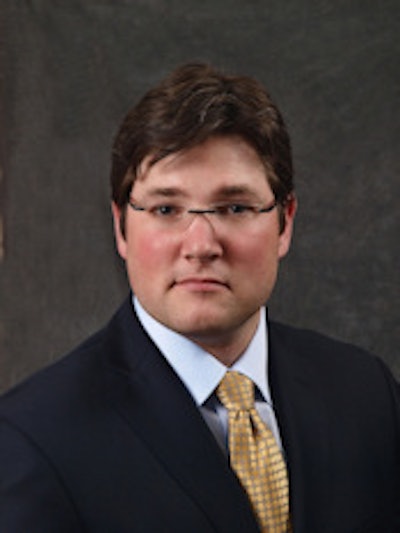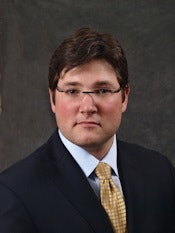
That sound you hear might just be a dam breaking. Radiology's traditional model of community-based group practices suffered another blow last week with the launch of Radisphere National Radiology Group, which is bypassing local radiology practices to sign contracts directly with hospitals.
Industry watchers are wondering if Radisphere's launch is the death knell of the radiologist-as-entrepreneur model, to be replaced by a paradigm in which radiologists are salaried employees of large companies. But others say that this change is exactly what radiology needs for quality to improve and for radiology's value in the healthcare enterprise to become crystal clear.
A new national provider
Radisphere is the product of teleradiology firm Franklin & Seidelmann Subspecialty Radiology (F&S) of Beachwood, OH, which publicly announced the new name and business model on April 7. It describes Radisphere as a national provider of professional radiology services that will give customers access to subspecialty radiologists, a software and workflow technology infrastructure, and a team of nonphysician professional services members. All F&S customers are now Radisphere customers, according to Scott Seidelmann, Radisphere CEO.
 |
| Radisphere CEO Scott Seidelmann. Image courtesy of Radisphere. |
With approximately 100 specialized radiologist employees, Radisphere not only provides staff and infrastructure services, it also will oversee quality control: Once a study is acquired and archived at a client hospital, Radisphere will take responsibility for monitoring the timeliness of the results, the diagnostic accuracy of the interpretations, and any necessary further consultations with medical staff, Seidelmann said.
"Our ability to come into a community and introduce superior-quality radiology services to the local medical staff is seen as a significant improvement in the day-to-day operations of our client hospitals," said Dr. Peter Franklin, co-founder of Radisphere, in a statement. "Because imaging services are at the starting point of the healthcare continuum, better quality and timely reports translate to higher quality healthcare."
But what may irritate owner-operator radiologists in independent groups is that Radisphere also offers study and workflow analysis to hospitals, using local general radiologists as well as a network of specialized teleradiologists; in fact, Radisphere's radiologists will read more than half of all studies remotely, the company said.
And using teleradiology any time, not just for night or specialty services, bothers radiologists, as it violates an unspoken agreement between teleradiology providers and radiology groups that has limited teleradiology's use and avoided competition with local groups. Many radiologists see this business model as destructive of radiology's independence and a prime mover toward a "radiologist for hire" paradigm in which radiologists are employees at hospitals or imaging services firms.
In a white paper posted on the Franklin & Seidelmann Web site last November, the company outlined its perspective:
"There are new options ... which give community hospital CEOs far greater flexibility in acquiring quality radiology staff than ever before. The technology that enabled nighttime reads is now becoming more and more available for full-service interpretations during the day ... a CEO can replace the current local radiology practice with a new group and hope they get better results. Or they can investigate new providers that offer a combination of some radiologist resources onsite in the hospital, but provide the predominant remainder of interpretations through a network of remote, highly skilled specialized radiologists whose focus is on a particular specialty."
The hybrid approach Radisphere is taking has been developing for a few years, as the night-read and subspecialty day-read markets have become saturated, according to Richard Townley, president and CEO of AGI Healthcare in San Ramon, CA, a consulting firm that works with both radiology groups and hospitals.
"The phenomenon is relatively new and has had mixed results," he said. "I call these corporate entities, because they're not traditional radiology practices. The business model is to hire a few local radiologists, sometimes from a group that has given up the local hospital contract or has been terminated, and complement the service those radiologists provide with teleradiology. But the challenge for these kinds of companies is to get the local radiologists, particularly for interventional and mammography readings."
Competition means quality?
Is change a bad thing? Not necessarily, according to Seidelmann.
"Change happens in hospital contracts, whether it's because the hospital has made the decision to shift imaging providers or whether it's due to turmoil in the hospital's current radiology group," he said. "Whether a hospital chooses some other local radiology group or us depends on how happy it is with the quality of available imaging services. We'd never have an opportunity for contracts if the hospital is happy with the radiology contract it has."
And this kind of competition for local markets can only improve the quality of imaging, Seidelmann said.
"Competition drives suppliers to provide better services," he said. "And this is better for radiology. The ultimate goal of radiology is to add value to the hospital's medical staff and referring physicians' services. As this value is added, there will be no question of the value of radiology and how it should be reimbursed."
Radisphere plans to target small or mid-sized community hospitals, facilities often challenging for small radiology groups to support, he said.
"Two-thirds of radiologists in the U.S. work in groups of 10 people or less," he said. "When the hospital starts asking for services like 24-hour coverage, or specialty reads, it can be very difficult for small practices to ramp up. It's just very hard for traditional local small radiology groups to deliver all the services that are now being demanded by community hospitals."
Radisphere will sign traditional radiology contracts with hospitals, offering exclusive services as well as turnaround time and quality guarantees. It will offer a consultative process to help a facility determine what it actually needs for radiology services by assessing the hospital's imaging procedure volume by current procedural terminology (CPT) code, evaluating the medical staff's needs, and performing studies that track how imaging exams are performed by day and by hour. The company will also provide clients with onsite staff, which it will monitor by regularly reviewing radiologists' work via double-blind reading of a percentage of their interpretations, Seidelmann said.
"We have a robust QA program: All our radiologists have been vetted," he said. "We test all our radiologists by specialty, examining 30 to 50 of their cases, and perform QA on them on an ongoing basis."
Skepticism abounds
But the business model proposed by Radisphere and other national radiology groups, such as Imaging Advantage of Santa Monica, CA, represents an existential threat to the community-based radiology group model that has dominated radiology for decades. Defenders of the traditional model have aired their objections in posts to the AuntMinnie.com Forums.
"This sort of thing would not be happening if there weren't radiologists willing to [sabotage] their profession," one poster wrote.
"Most hospital-contracted groups have their incentives aligned with those of the hospital," another poster wrote. "[A company like Radisphere] suggests dismantling much of the radiology support infrastructure. Good luck trying to piece that back together [if the company] fails: The inevitable disruption to the patients, service, market share, and profits will not be worth it."
"There are a lot of ... displeased hospital administrations that are receptive to [this kind of model]," according to another post. "But there are no hybrid companies out there that are doing it completely right, and [it's unclear whether that's even] possible, because the boots on the ground are always going to be subpar due to location-related difficulties in recruiting."
Once radiology practices started hiring teleradiology firms to help not only with night reads but also with daytime duty, their independence was compromised, according to Douglas Smith, founder and president of healthcare consulting firm Barrington Lakes Group in Barrington, IL.
"I've been telling my clients that once you introduce a substitute to your principal client, the hospital, you've submitted your resignation," Smith said. "Small hospitals then have a direct experience with the teleradiology group and can decide that they don't need the local guys."
This shift to using teleradiology 24 hours a day is a logical progression from the night-only read model.
"This new F&S venture is a virtual radiology group practice," Smith said. "They're going to small hospitals that have a need for subspecialty service, in part to attract medical staff to the facility. To the extent that the local group doesn't provide that, they will."
On the bandwagon?
Radisphere isn't the first company to use this business strategy. Imaging Advantage made waves last year when it started operations, hiring radiologists to work directly within hospital radiology departments. Services such as advanced visualization, overnight on-call teleradiology, and subspecialty interpretations are outsourced to other firms.
As with Radisphere's launch, the move sparked a negative response from traditional radiology groups, who believe they stand to lose if a nationwide imaging services provider contracts directly with hospitals.
But Radisphere differs from Imaging Advantage in that it offers all the components of radiology service directly, rather than subcontracting parts out to other firms or providers, Seidelmann said.
"While the business approach may be similar [between the two firms], we're different in that we control all aspects of the service," he said. "It can be very hard to control the quality of service if you've subcontracted out parts of it."
By Kate Madden Yee
AuntMinnie.com staff writer
April 15, 2010
Related Reading
F&S forms national imaging services firm, April 7, 2010
F&S awarded Calif. contract, February 10, 2010
Franklin & Seidelmann adds Florida client, October 21, 2009
F&S signs Fuji vet Larsen, August 25, 2009
Franklin & Seidelmann adds clients, February 5, 2009
Copyright © 2010 AuntMinnie.com




















